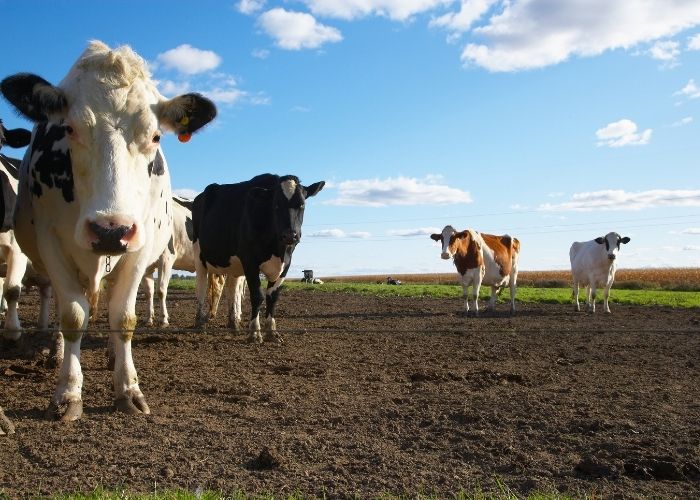MADRID – The lack of rain, the low level of the reservoirs, the water shortage in resources, and the increase in production costs are putting the Spanish agricultural sector in a state of alarm.
They are experiencing the second-worst start to the hydrological year so far this century. That means that half of Spain’s agricultural production is currently in a drought-alarm situation.
Thousands of productions on the brink of failure
Due to the increased production costs in the past six months, thousands of productions are on the brink of failure. The water shortage could mean the final push into the abyss. The sectors most affected at the moment are cereals, olive groves, vineyards, rain-fed almond trees, extensive livestock pastures, and beekeeping. This is apparent from data from the agricultural organisation COAG. The most critical is the situation in Andalucia, southern Extremadura, Castilla-La Mancha, various zones in Murcia, Lleida and Girona.
The worrying situation in Spanish water reserve
The Spanish water reserve is at 44.6% of its capacity. The water shortage is severe in the river basins in the southern half of Spain. According to the Ministry of Ecological Transition, these are at 30% of their capacity. This applies to Guadalete-Barbate (29.8%), Guadiana (30.5%), Andalucian Mediterranean (30.6%) and Segura (34.7%).
Below the 30% limit is the Guadalquivir with 28.5%. This contains 2,316 cubic metres, while the average in recent years has been close to 5,000. The Guadiana’s reserve has gone from 5,594 on average over the past ten years to 2,895.
From October 1 to the end of January 2022, it rained 33% less than the average in the reference period between 1981 and 2020 (191 litres per m2).
Drought Measures in Guadalquivir Basin
Measures were taken in the Guadalquivir basin as a result of this drought crisis. Below, first of all, restrictions on industrial use. In addition, a reserve stock of 400 hm3 must remain for supply in all reservoirs. Finally, a reserve of 100 hm3 must be guaranteed to prevent the permanent loss of vulnerable crops.
Farmers demand government support
Agricultural organisations in Spain are asking the government for help in alleviating the situation due to the water shortage. ASAJA is calling for waivers of irrigation and direct taxes, social security cuts, and cuts in farm electricity costs. COAG requests, among other things, tax exemptions, direct aid, or zero interest credits.
20% olive harvest already lost
Cristóbal Cano, general secretary of UPA in Andalucia, emphasises that 20% of the olive crop has already been lost during this campaign. This owner of 10 hectares of olive groves in Alcalá La Real (Jaén) warns of “the doom that is coming our way” and doubts “society is aware of the problem we have.”
See also: The limits in sight for Spanish marco-farms
At the same time, he argues that in the debate on the approval of the new hydrological plans, “in arid Spain – that is, in the centre and the south – infrastructure should be built to distribute the water fairly and socially. That is needed more than ever, as drought and water shortage will remain a serious problem for years to come.”
Support measures for farmers in Extremadura
In Extremadura, the autonomous government this week requested the national government for tax exemptions or support for farmers. That region is now experiencing its worst drought since 1995. Water restrictions are already in place in nine municipalities. The reservoir of La Serena – the largest in Spain and the third in Europe – is at 14% of its capacity (473 hm³).
Pre-drought warning in Galicia
In Galicia, the Xunta imposed a “pre-drought warning” level on Monday due to the lack of rain. In January, 64% less than usual fell on these dates in previous years. The level of the rivers is 43% lower.
Rain Castilla y Leon
COAG emphasises in a report that if it doesn’t rain in the main grain-producing areas in Castilla y León within two weeks, there would already be significant losses.
Garlic Castilla-La Mancha
The garlic harvest in Castilla-La Mancha also suffers from a lack of water.
Cattle
Livestock farmers under the extensive regime resort to buying replacement feed when there is no grassland due to drought. They also introduce supplements with feed and straw and feed, which will soon become more expensive.
Beekeeping
The lack of rain leads to the lack of flowers. Bee colonies cannot develop normally this way.
See also: Spain is entering a relatively warm period this week


